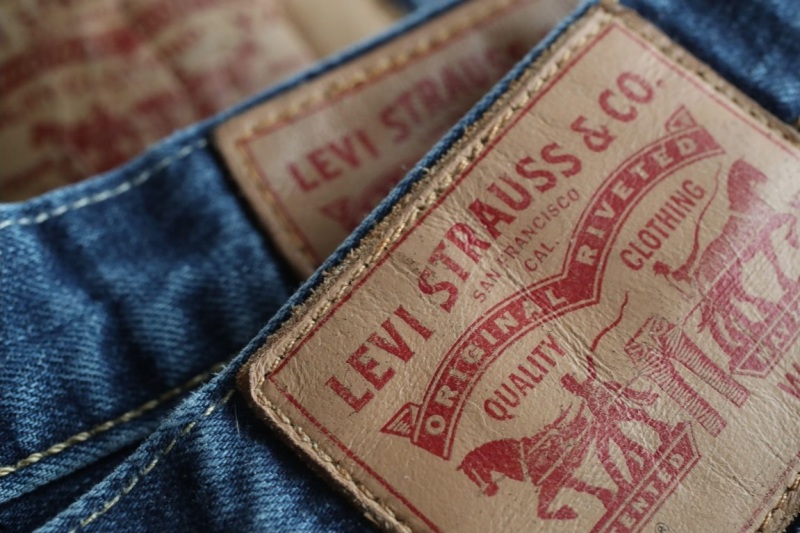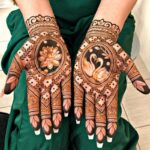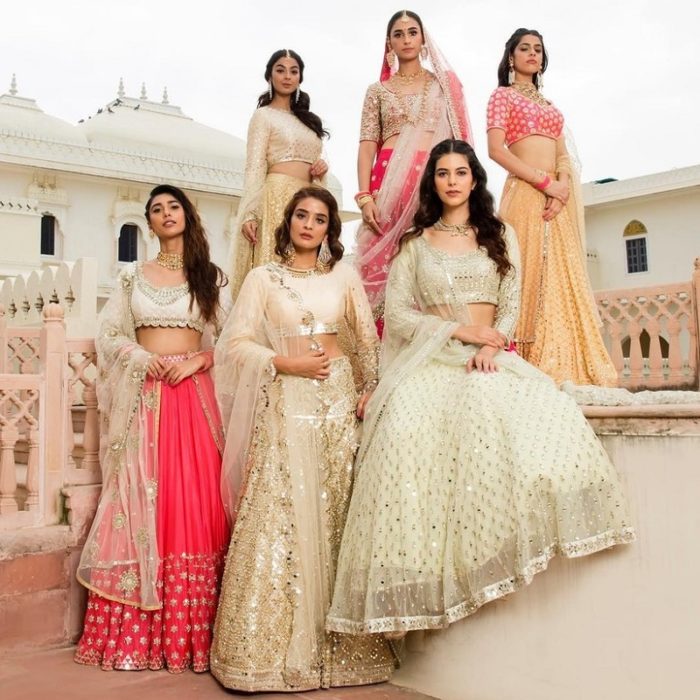Decoding Trends: Indian Consumer Purchase Behavior of Foreign Brand Jeans

In the ever-evolving panorama of Asian fashion, particularly within the vibrant tapestry of India, there has been a significant and conspicuous surge in the popularity of foreign brand jeans. This intriguing phenomenon marks a paradigm shift in the way Indian consumers perceive and embrace denim apparel, as global influences continue to weave themselves into the fabric of the nation’s sartorial preferences. As a kaleidoscope of styles converges on the Indian fashion landscape, this article embarks on a comprehensive exploration into the intricacies of Indian consumer purchase behavior, specifically delving into the realm of foreign brand jeans. By illuminating the factors that wield a profound influence over the choices made by consumers and unraveling the nuanced trends that shape the market dynamics, we aim to unravel the rich narrative that defines this dynamic interplay between global fashion and indigenous preferences.
The confluence of tradition and modernity, coupled with an insatiable appetite for international styles, has given rise to a fascinating dichotomy within the Indian fashion ethos. This is particularly evident in the realm of denim, where the allure of foreign brand jeans has transcended mere articles of clothing to become symbolic of a broader cultural shift. As consumers navigate this complex intersection between global trends and indigenous roots, their choices become a reflection not only of personal style but also of the evolving collective consciousness of a nation in the throes of a fashion renaissance.
Against this backdrop, our exploration will unfurl the layers of consumer behavior, akin to peeling back the intricate folds of a well-woven tapestry. We delve into the motivations that propel individuals to choose foreign brand jeans over their domestic counterparts, unraveling the psychology that underpins these decisions. From brand perception and quality considerations to the impact of cultural integration and the allure of global fashion icons, we embark on a journey to decode the intricate patterns woven into the fabric of Indian consumer choices.
This article serves as a portal into the world of denim aficionados in India, capturing the pulse of a generation that embraces diversity and seeks a harmonious blend of global and local influences. As we navigate the labyrinth of Indian consumer behavior in the context of foreign brand jeans, we illuminate the path for fashion enthusiasts, market analysts, and brands alike, providing insights that transcend the superficial to reveal the underlying currents shaping the denim landscape in the dynamic realm of Asian fashion.
The Rise of Foreign Brand Jeans in Indian Fashion:

Unraveling the intricate evolution of foreign denim brands within the Indian market reveals a captivating journey deeply influenced by globalization and the digital age. The surge in demand for international denim labels is not merely a consequence of fashion trends but a testament to the profound impact of cross-cultural exchange. As social media bridges geographical gaps, the allure of foreign brand jeans transcends borders, becoming emblematic of the cosmopolitan ethos embraced by the younger generation in India. This demographic, enamored by Westernized fashions, particularly lauds iconic brands like Levi Strauss, weaving a tapestry of style that effortlessly blends global influences with traditional elements.
Influencing Factors on Purchase Decisions:
Navigating the labyrinth of Indian consumer behavior in the realm of foreign brand jeans unveils a rich tapestry woven with myriad influencing factors. The younger demographic, enamored by Westernized fashions. This preference is not solely about the denim itself but encompasses a cultural shift toward embracing Western aesthetics. In this context, brand perception, quality benchmarks, and pricing dynamics take on added significance. The younger consumers, attuned to the narrative woven by Levi Strauss, are particularly discerning, seeking a blend of style, quality, and a connection to the global narrative.
Cultural Integration and Brand Appeal:
Foreign denim brands, keenly aware of India’s rich cultural diversity, strategically integrate cultural nuances into their brand appeal. This approach extends beyond traditional marketing, aiming to resonate with the evolving sensibilities of the younger generation embracing Westernized fashions. Brands with their deep-rooted heritage and iconic status, effortlessly bridge the gap between global styles and local preferences. The fusion of Western aesthetics with cultural sensitivity not only enhances brand appeal but also positions these brands as symbols of a dynamic, globalized India.
Online vs. Offline Shopping Trends:
As the digital landscape reshapes the retail panorama, the dichotomy between online and offline shopping experiences becomes increasingly significant. E-commerce platforms, with their accessibility and convenience, wield growing influence, particularly among the younger generation. Westernized fashion, finds a strong presence in the online sphere, catering to the tech-savvy demographic that seeks seamless shopping experiences. This section delves into the evolving trends in consumer behavior, showcasing how the popularity of foreign brand jeans, especially those like Levi Strauss, is intertwined with the digital realm.
Sustainability and Ethical Considerations:
In the era of heightened environmental awareness, sustainability and ethical considerations emerge as pivotal factors in the purchase decisions of Indian consumers, especially the socially conscious younger generation. Brands like Levi Strauss, with a storied commitment to responsible practices, align with the values of environmentally conscious consumers. Beyond the allure of fashion, the younger demographic, drawn to Westernized fashions, seeks brands that resonate with their ethical and sustainable sensibilities.
Brand Loyalty and Repeat Purchases:
The concept of brand loyalty stands as a linchpin in the Indian denim market, amplified by the younger generation’s penchant for Westernized fashions. Brands like Levi Strauss, with their iconic status and timeless appeal, foster a sense of loyalty that transcends mere consumer-brand relationships. The younger demographic, captivated by the narrative of Levi Strauss, exhibits a unique brand loyalty deeply rooted in the fusion of global style and individual identity. This section explores how brand allegiance goes beyond the denim itself, becoming a symbol of cultural alignment and personal expression.
Future Trends and Market Predictions:
As the Indian consumer continues navigating the ever-evolving landscape of foreign brand jeans, predicting future trends becomes both an art and a science. The younger generation, steering the helm of fashion evolution, is poised to dictate the trajectory of the denim market. This section delves into the potential trajectories shaped by fashion cycles, the emergence of new brands, and the global events that resonate with the Westernized fashion narrative, especially brands like Levi Strauss. A glimpse into the future provides valuable insights for brands, marketers, and enthusiasts, offering a forecast shaped by the dynamic interplay of cultural convergence and individualistic expression.
Number of denim jeans consumed across India from 2013 to 2020
In conclusion, the surge in the popularity of foreign brand jeans within the dynamic landscape of Indian fashion unveils a compelling narrative, where the threads of global influence seamlessly interweave with the rich tapestry of indigenous preferences. As our exploration journeyed through the intricacies of Indian consumer purchase behavior, it became evident that foreign brand jeans are not merely articles of clothing; they embody a cultural shift, symbolizing the harmonious coexistence of tradition and modernity.
The confluence of diverse factors, including brand perception, quality benchmarks, cultural integration, and the allure of global fashion icons, has sculpted a nuanced landscape where consumers make choices that transcend the utilitarian nature of denim. The younger generation, particularly drawn to Westernized fashions, adds another layer to this dynamic narrative, epitomized by brands like Levi Strauss. This Westernized influence, blending seamlessly with the vibrant colors of Indian culture, shapes the evolving denim preferences of the nation.
As we navigate this intricate interplay, it becomes clear that foreign brand jeans are not just commodities but cultural markers, reflecting the evolving collective consciousness of a nation in the midst of a fashion renaissance. This exploration serves as a valuable compass, guiding industry stakeholders, fashion enthusiasts, and cultural observers to comprehend the deeper currents shaping the denim landscape in the vast expanse of Asian fashion. As the journey continues, it is apparent that the allure of foreign brand jeans will continue to shape and be shaped by the dynamic narratives of global fashion and regional individualism.































